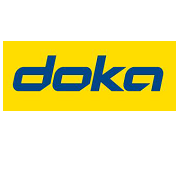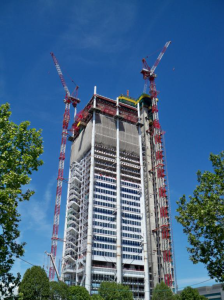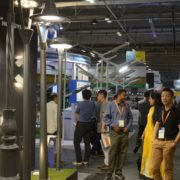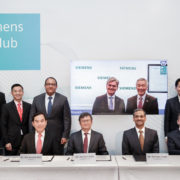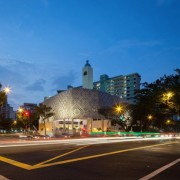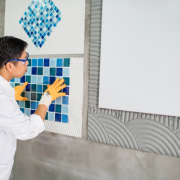New 166 m Office Tower Will Be The Second-Tallest Building In Turin
World-famous Italian star architect Renzo Piano is the name behind another new urban landmark in Turin, this time a sophisticated highrise project in the city’s San Paolo district. The client is the banking group Intesa Sanpaolo SpA (BISP), whose around 100,000 staff and over 5000 branches make it one of the largest in the eurozone. The new building will fulfil very exacting structural and environmental standards. Rising to a height of 166 m, it will also take up a visually pre-eminent position in the Turin skyline. Especially with its automatic climbing equipment, Doka is helping this structure to be built economically and to high quality specifications.
A prestige project in the highrise sector: once completed, the Torre Intesa Sanpaolo skyscraper in Turin will house the new headquarters of the Intesa Sanpaolo SpA banking group.
Turin, Italy – On completion, the Torre Intesa Sanpaolo will offer more than 110,000 m² of useable floor-space spread over 44 storeys, with most of it being used to accommodate 2000 office workplaces. Other parts of the building will be put to various interesting uses for the Turinese public, including a conference and event venue, exhibition spaces, a panorama restaurant and a bar with a viewing terrace. Visitors will be whisked upwards by a free-standing panoramic lift.
To achieve high sustainability performance for the structure, the architects are implementing a ‘Green Building Challenge’ energy concept which will give the building an Energy Class A rating under Italian regulations. To this end, the eastern and western facades of the building will be enveloped in a double glass ‘skin’ with movable louvres that can assist with temperature regulation by being opened or closed as needed. Furthermore, ventilated ceilings are to be installed throughout the building. The southern facade carries 1600 m² of photovoltaic panelling for generating electricity. Geothermal heat will also be tapped, to lower the building’s external energy-sourcing needs.
Complex construction operations
Construction works have been entrusted to a consortium formed by Italian general contracting group Rizzani de Eccher SpA, acting as leader, and Implenia AG of Switzerland. On a site as large and complex as this – building the 166 m tower with three CIP concrete cores, composite floor slabs (steel girders plus pre-cast concrete members), shafts for 25 lifts, energy-saving HVAC systems – it is crucially important for the formwork systems used to be efficient, high-performing and reliable. In addition, on this site a substantial volume of structural steel works had to be optimally integrated into the construction workflow: to provide work-decks for pre-assembling the steelwork for the floor slabs, Doka supplied a large platform with a high load capacity (5.0 kN/m²). This platform was suspended on high-load cones anchored in the rising concrete wall, doing away with the need for labour-intensive and time-consuming shoring scaffolds.
Safe, streamlined climbing
To build this 44-storey office tower, it was important to deploy fast, efficient yet highly flexible formwork systems that could be quickly adapted to the changing circumstances encountered in different workflows. Another requirement was that the forming operations should need as little craneage as possible, because this had to be kept available for the extensive structural steel works. For this reason, the contracting consortium decided to construct the rising reinforced-concrete walls using the ‘SKE50 plus’ and ‘SKE100 plus’ self-climbing systems. The concrete placing booms are always raised cranelessly along with the formwork whenever this is automatically ‘climbed’. The fact that the entire unit is firmly anchored to the concrete construction at all times during the climbing operation ensures constant cycle times throughout the entire course of construction – regardless of the weather conditions: With the SKE system, climbing operations can continue unhindered up to a maximum wind speed of 72 km/h and a structure inclination of up to +/- 15 °.
Dokaflex props and formwork beams H20 were used to shore the composite floor slabs during construction. In areas with very high room heights, the slabs were shored with the Load-bearing tower Staxo 100 system. The resulting cycle time for all the operations on one storey was ten days.
Ever since work started on this site, a Doka project manager has been on hand to provide formwork-technology oversight. Ciro Menna of Doka Italia co-ordinates the planning and deliveries, and acts as the interface to all the decision-makers on the site: “Our formwork solution has proved itself with flying colours, in terms of both performance and safety, and has helped to optimise the sequencing of all site operations”, notes Menna, summing up his experience on this build.


